Clinician Education
Bloodstream infections are a dangerous complication of dialysis. It is important for physicians, nurses, dialysis technicians, and all healthcare providers to understand and follow proper infection control procedures. The resources on this page are designed to help dialysis clinicians understand the basics of infection control.
- Staff Competencies
- Areas for Patient Education
- Days Since Infection Posters
- Infection Prevention Audit Tools and Checklists
- Online Learning Module: Managing Infections in an Outpatient Dialysis Facility
- Preventing Bloodstream Infections in Outpatient Hemodialysis Patients
- Hand Hygiene Resources
- CDC Commentary Videos
Assess staff upon hire and at least yearly in the following competencies (Note: not all categories will be applicable to all staff):
Gloving and hand hygiene (all staff) – includes recognition of appropriate situations for glove use/hand hygiene, proper use and removal of gloves, and proper hand hygiene technique.
Catheter dressing change technique – includes correct performance of hand hygiene, and use of gloves, and correct use of antiseptics (proper application and allow drying, etc).
Vascular access technique – includes correct performance of hand hygiene and use of gloves, catheter site and port/vascular access antisepsis, and aseptic technique.
Safe injection/safe medication practices – includes proper technique for
- parenteral medication preparation, handling, administration and storage (e.g., not in patient station, etc.)
- use of aseptic technique,
- proper hand hygiene before preparing or administering medications or infusions
- proper cleansing of medication injection ports and medication vial diaphragms.
- proper use and handling of single use vials and bags.
Patients with catheters:
- Hand hygiene
- General access care at home (e.g., bathing with a catheter)
- Signs and symptoms of infection
- How to respond if problems with catheter develop outside of the dialysis center
- Risks associated with catheters/importance of permanent access
- Basic infection control practices during catheter accessing process (as a means to engage patients)
Patients with other access types:
- Hand hygiene
- Washing the access site prior to treatment
- General access care at home (e.g., don’t scratch or pick at the site)
- Signs and symptoms of infection
- How to respond if problems with access develop outside of the dialysis center
- Basic infection control practices during cannulation process (as a means to engage patients)
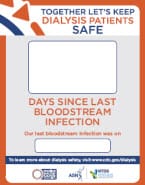
Preventing infections is essential for patient safety. Facilities are encouraged to place this poster, tracking the days that have passed since the last bloodstream infection (BSI), in areas visible to patients, family members, and staff to raise awareness about infections. It provides immediate feedback to front line staff and can motivate and inspire them to get involved by using the Core Interventions to reduce BSIs in your facility.
The poster can also be used to start discussions and provide education about the importance of preventing BSIs with patients and family members.
The poster is available in two sizes and you have the option to add your organization’s logo. Laminated copies of the print version can also be ordered for free from CDC-Info on Demand.
| Fillable version (add your organization logo) | Non Fillable version (available in print) |
|---|---|
| 8.5 x 11 (Print Only) [PDF – 1 page]11 x 17 (Print Only) [PDF – 1 page] | 8.5 x 11 (Print Only) [PDF – 1 page] Pub ID 300199 11 x 17 (Print Only) [PDF – 1 page] Pub ID 300200 8.5 x 11 (Print Only) [PDF – 1 page] Pub ID 300458 (Spanish) 11 x 17 (Print Only) [PDF – 1 page] Pub ID 300459 (Spanish) |
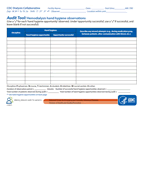
The Prevention Tools page has tools and checklists to improve infection prevention.
Visit the Making Dialysis Safer for Patients Resource Center to order complimentary copies of audit tools and checklists.

In partnership with CDC, Nephrologists Transforming Dialysis Safety (NTDS) has created an online resource which presents core infection prevention and patient safety concepts in a case-based format.
This module, Managing Infections in an Outpatient Dialysis Facility, is a self-paced learning tool designed specifically for staff in outpatient hemodialysis facilities. It focuses on key infection prevention techniques and patient safety concepts. The module runs approximately 90 minutes in total length; it may be watched at intervals as your schedule allows.
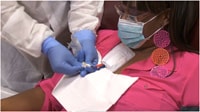
CDC has created a video for frontline dialysis staff along with an accompanying poster for staff and pocket card for patients that convey best practices for preventing bloodstream and other infections in hemodialysis outpatients. Use as an educational tool in hemodialysis facilities as orientation for new staff or annual in-service training.
| English version | Spanish Version |
|---|---|
| YouTube LinkCDC Streaming Link | YouTube linkCDC Streaming Link |
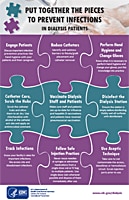
This 11×17 wall poster is a visual reminder of measures that staff can take to reduce infection in dialysis patients. The elements include Engage Patients, Reduce Catheters, Perform Hand Hygiene and Change Gloves, Catheter Care, Vaccinate Staff and Patients, Disinfect the Dialysis Station, Track Infections, Follow Safe Injection Practices, and Use Aseptic Technique.
Download file:
Standard Version [PDF – 535 KB]
Spanish Version [PDF – 498 KB]
Print Version [PDF – 1.8 MB]
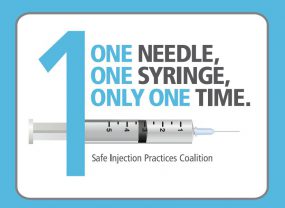
Healthcare providers can understand safe injection practices by viewing this unique animated video. This video highlights the importance of using single-dose vials one time for one patient by following the story of Joe, a patient who ended up in the hospital with an infection as a result of unsafe injection practices. Visit the One & Only Campaign webpage to learn more.
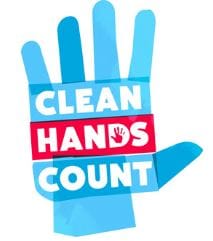
Clean hands count for dialysis care. This brochure [PDF – 2 pages], specific to dialysis care, provides tips to protect yourself and your patients from potentially deadly germs. Visit the Clean Hands Count webpage for stickers, posters and pocket cards.
See how CDC Infection Prevention Tools for Dialysis Settings can reduce infections.

